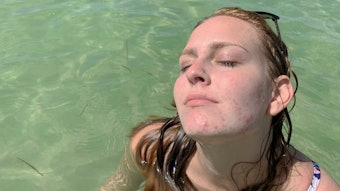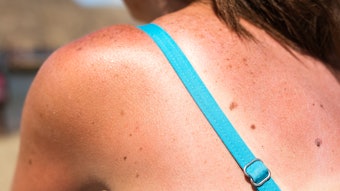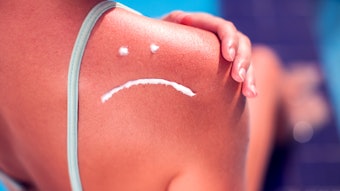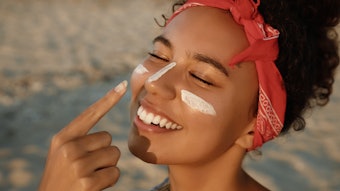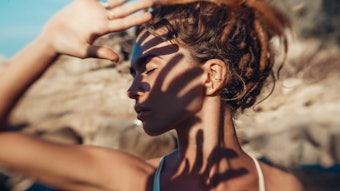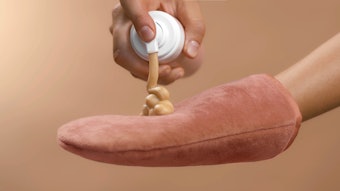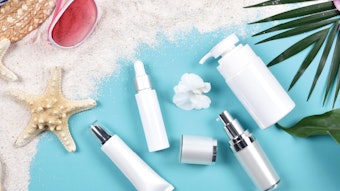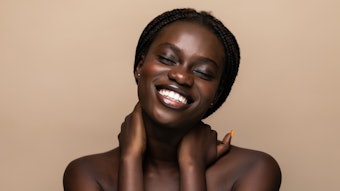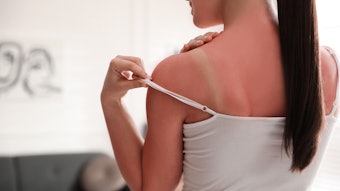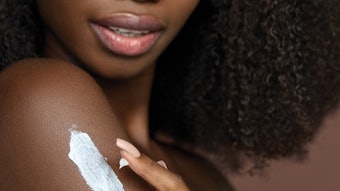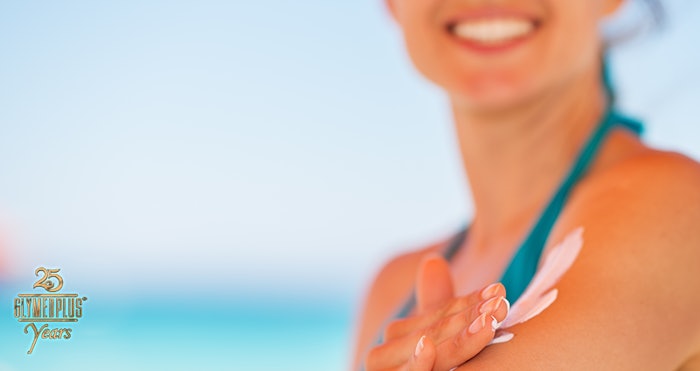
There is a notion in Western society that tan, glowing skin is a sign of health. In reality, a tan regardless of source significantly increases your risk of getting skin cancer. A tan is actually showing up as a result of DNA mutations occurring deep within the skin after exposure to UV radiation. The color is the body’s way of telling you to stop.
The earth’s atmosphere blocks 98.7% of the UV radiation that comes from the sun. The 2.3% that actually penetrates through the atmosphere has both negative and positive effects. On the positive side, UV rays help the skin produce Vitamin D, and they are often used in the treatment of skin conditions like psoriasis. However, UV rays can also cause skin cancer and compromise the immune system.
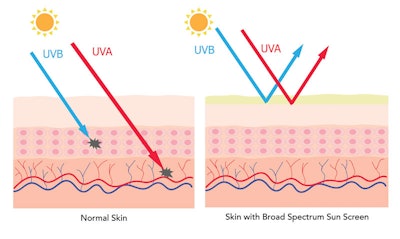
UVA vs. UVB Rays
The easiest way to remember the different UV rays is UVA (“A” stands for aging) rays have long wavelengths that penetrate deep into the skin and affect the connective tissue. Overtime, this will weaken our collagen and elastin fibers, which cause aging. UVB (“B” stands for burning) rays have shorter wavelengths that are more intense than UVA rays. These rays are responsible for burning of the skin. UVA rays are present all year and can penetrate through the clouds and glass, so we are exposed to them in large doses. The intensity of UVB rays varies according to the season, location and time of day.
People should avoid going outside in the sun between 11 am and 1 pm, as this is when UV rays are strongest. They also reach their peak in strength during the summer months. The closer you are to the equator, the higher the UV levels. The higher the altitude, the thinner the atmosphere—meaning less UV rays are filtered out. The ozone layer protects us from these harmful UV rays, which is also being thinned by the pollution. The thinner the ozone layer is, the less UV rays it can filter out.
Tanning Bed vs. Sun Exposure
Nearly 30 million people in the United States tan in a tanning salon every year. Most of those people are women ranging in age from 16-49 years old. It has been said that using a tanning bed is safer than being out in the sun—this is simply not true. Tanning beds emit about the same amount of UVB rays as the sun, but produces upwards of three times the amount of UVA rays.
Consumers also think that use of a tanning bed will help them obtain more Vitamin D, due to the exposure to high concentrations of UV rays. The fact is you cannot get Vitamin D from tanning in a tanning bed. Tanning beds emit mostly UVA rays, and it is actually UVB rays that cause the skin to produce Vitamin D. Low exposure to natural sunlight is the most natural way that our body gets Vitamin D. Vitamin D helps the body produce calcium, which helps bone strength and is also said to help prevent cancer risk. Indoor tanning beds are associated with a 50% increase in the risk of basal cell carcinoma, a more than 100% increase in the risk of squamous cell carcinoma, and are 74% more likely to develop melanoma.
Use of an indoor tanning bed is a controlled, but very intense and dangerous, dose of concentrated UV radiation. The dosage of radiation is 12 times the annual UVA dose compared to the amount received from the sun. Tanning beds give off the same amount of UV radiation as the sun at midday in the Mediterranean.
It has been said that using a tanning bed is safer than being out in the sun—this is simply not true.
Preventing DNA Damage
Tanning itself, whether it comes from the sun or a tanning bed, is a sign that your DNA is damaged at the cellular level. Educating the client of the dangers of long, unprotected exposure to the sun, as well as the use of tanning beds, is incredibly important.
The best way to protect skin from the dangers of tanning and the mutation of skin cells’ DNA is the application of broad spectrum sunscreen. Broad spectrum sunscreen absorbs both UVA and UVB radiation, and an SPF of at least 15 is still recommended for optimal protection. GlyMed Plus has 4 sunscreens that are all FDA-approved broad spectrum sunscreens. The Photo-Age Environmental Protection Gel 15 is our most popular sunscreen. It is what we call the “sunscreen haters sunscreen,” because of its gel-like consistency and tropical smell. This product provides protection and anti-aging benefits without the heavy feeling of typical sunscreens.
Throughout 2016, as GlyMed Plus celebrates 25 years, the gift of a Retail Size Beauty Oil is given to GlyMed Plus Professionals (limit 1 per customer). Learn more about how to qualify to receive your gift by contacting a GlyMed Plus Licensed Master Aesthetician at 800-676-9667 today. You can also connect with us on Facebook for updates, giveaways, product tips and more.
Disclaimer:
The above paid-for content was produced by and posted on behalf of the Sponsor. Content provided is generated solely by the Sponsor or its affiliates, and it is the Sponsor’s responsibility for the accuracy, completeness and validity of all information included. Skin Inc. takes steps to ensure that you will not confuse sponsored content with content produced by Skin Inc. and governed by its editorial policy.
